This building, designed for a textile manufacturer, served as both a commercial property (in the basement and on the ground floor) and a residence. Gaudí scholars say in chorus that this building is the most conventional of his works, partly because it had to be squeezed in between older structures and partly because it was sited in one of the most elegant sections of Barcelona. Its symmetry, balance and orderly rhythm are unusual for Gaudí's works. However, the curves and double gable at the top, the projecting oriel at the entrance--almost baroque in its drama, and isolated witty details are modernista elements.
|
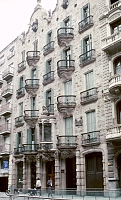
|

|
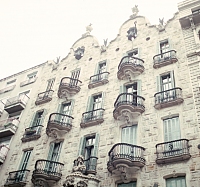
|
| |
|
View of the center (left) and side windows and balconies (center and right) Bulging balconies alternate with smaller, shallower balconies. Mushrooms above the oriel at the center allude to the owner's favorite hobby. (See below.)
|
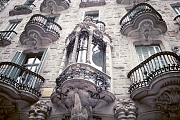
|
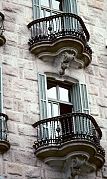
|
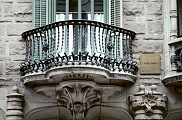
|
| |
|
Columns flanking the entrance are in the form of stacked bobbins--an allusion to the family business (textile manufacture). Lluís Permanyer claims that "the gallery at ground level is the facade's most outstanding feature, a daring combination of wrought iron and stone in which decorative historical elements such as a cypress, an olive tree, horns of plenty, and the Catalan coat of arms can be discerned" (68).
|

|
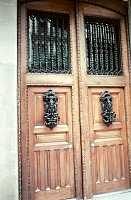
|
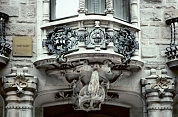
|
| |
|
Three sculpted heads at the top also allude to the owner: One is Sant Pere Màrtir Calvet i Carbonell (the owner's father) and two are patron saints of Vilassar, Andreu Calvet's home town.Left: Detail of oriel with mushrooms; Center and right: Details of the top gables |
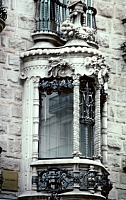
|

|
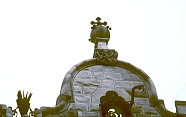
|


 Go to Gaudí Index.
Go to Gaudí Index. Click here to return to index of art historical sites.
Click here to return to index of art historical sites.
 Click here to return to index of artists and architects.
Click here to return to index of artists and architects.
 Click here to return to chronological index.
Click here to return to chronological index.
 Click here to see the home page of Bluffton College.
Click here to see the home page of Bluffton College.
